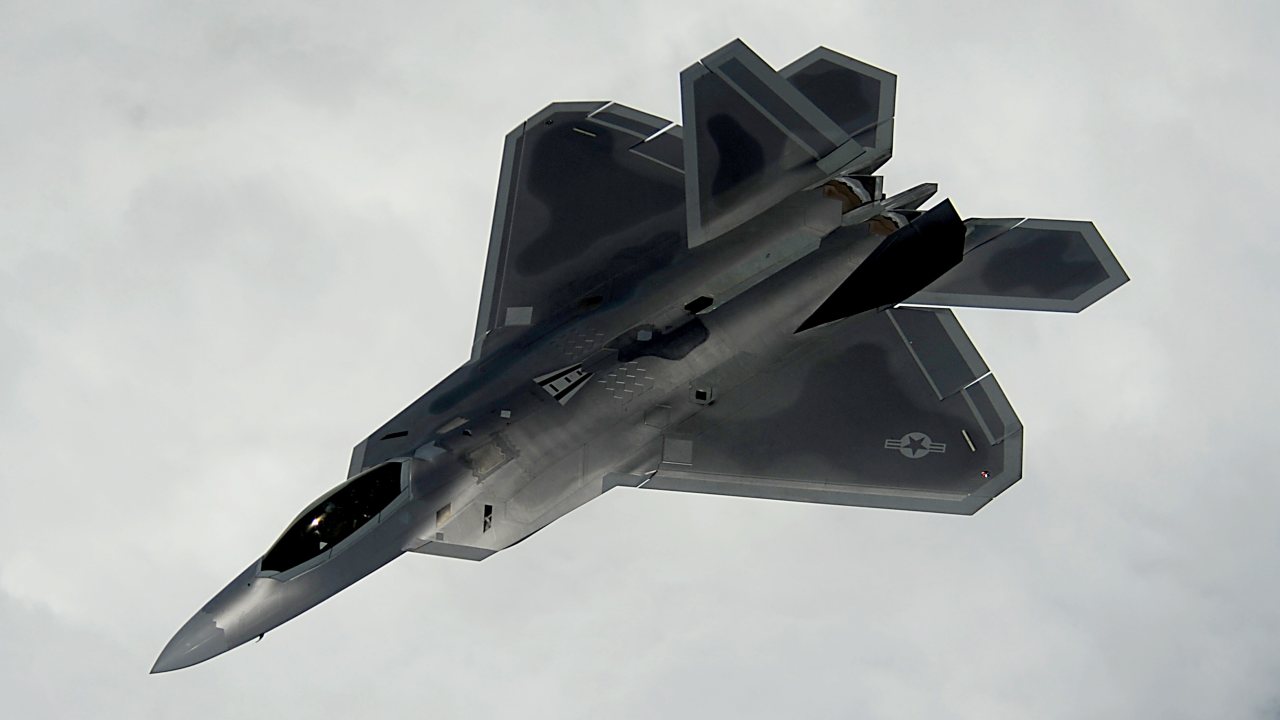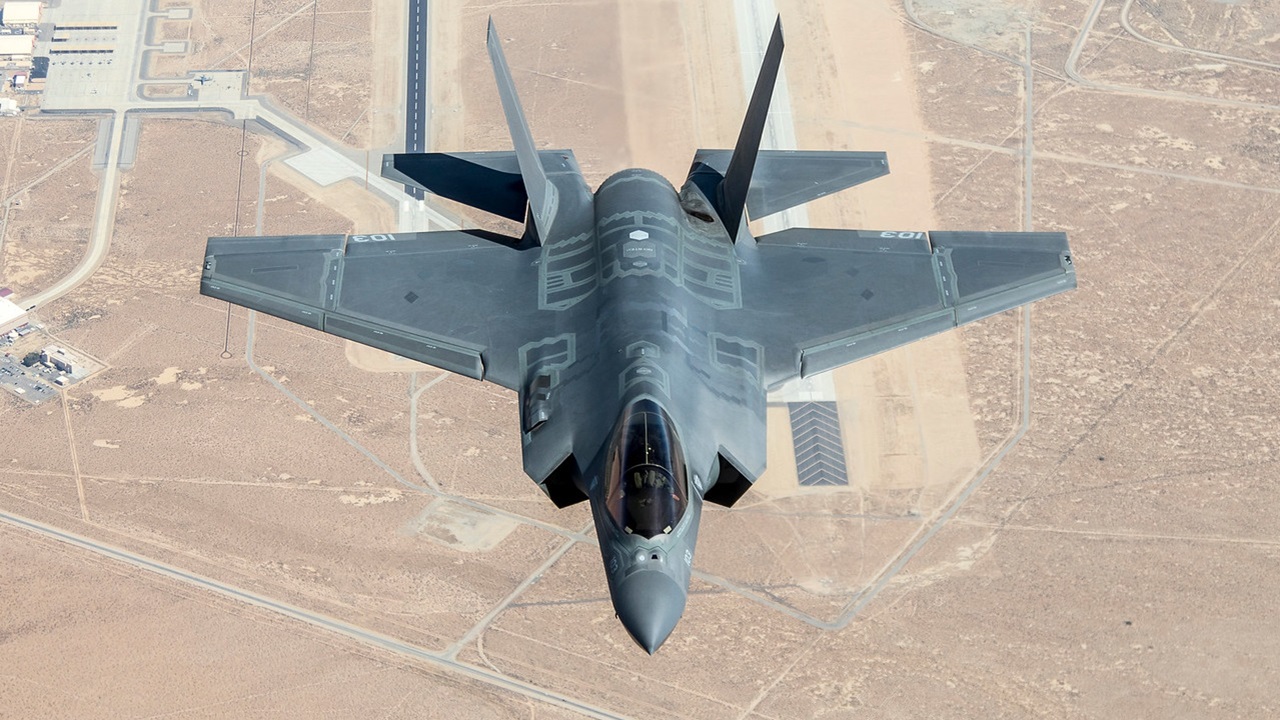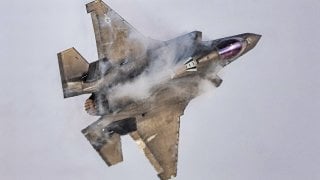F-22 Raptor vs. F-35 Joint Strike Fighter: This Dogfight Actually Happened
Last May, two U.S. Air Force F-22 Raptor fighter jets participated in a rare dogfighting exercise over the Korean Peninsula alongside two South Korean F-35s. The aerial combat maneuvering (ACM) drills were likely intended to send a strong message to North Korea and China amid rising regional tensions.
What You Need to Know: Last May, two U.S. Air Force F-22 Raptor fighter jets participated in a rare dogfighting exercise over the Korean Peninsula alongside two South Korean F-35s. The aerial combat maneuvering (ACM) drills were likely intended to send a strong message to North Korea and China amid rising regional tensions.

-The F-22s, deployed from Joint Base Pearl Harbor-Hickam in Hawaii, engaged in close-range combat scenarios to enhance Agile Combat Employment (ACE) capabilities. Despite China's advancements with the Chengdu J-20 stealth fighter, the F-22 remains the world's premier air superiority aircraft.
-Plans to replace the F-22 with the Next Generation Air Dominance (NGAD) program are currently on hold.
F-22 vs. F-35 Dogfight: It Made History and the World Barely Noticed
Last May, two F-22s participated in a training exercise over the Korean Peninsula that surely caught the attention of North Korea and China. Alongside two South Korean F-35s, the United States Air Force (USAF) F-22s engaged in a dogfighting, or aerial combat maneuvering (ACM), exercise.
“The training saw the four stealthy fighters engaging in close-range air combat maneuver, taking turns in offensive and defensive posture in simulated confrontation scenarios,” Air and Space Forces Magazine reported.
The F-22s arrived in South Korea, via Japan, from their home at Joint Base Pearl Harbor-Hickam in Hawaii, where the jets were assigned to the 19th and 199th Expeditionary Fighter Squadrons.
Tensions rising in the Indo-Pacific
The dogfighting exercises over the Korean Peninsula are no coincidence, as tensions continue to rise in the Indo-Pacific. According to the USAF, the F-22 training would help to, “test Agile Combat Employment (ACE) capabilities within the Indo-Pacific.” ACE is “defined by small teams of Airmen and aircraft operating from remote or austere bases and moving quickly, as a key part of the service’s pivot toward great power competition with the likes of China.”
The USAF has been increasing its ACE training in the region. Earlier in the year, B-1 Lancers and F-22s trained alongside South Korean F-35s over the Yellow Sea. In late 2022, F-22s and a B-52 flew alongside Korean F-35 and F-15K fighters. However, for an F-22 to participate in a full-fledged dogfighting exercise over the Korean Peninsula is rare.
China, for their part, is acutely aware of American activities in the region, as well as American fighter capabilities. To counter American fighters like the F-35 and F-22, the Chinese have been expanding their fleet of Chengdu J-20 stealth fighters, the country’s first fifth-generation aircraft. The J-20, likely developed with the aid of stolen F-35 technical information, is a capable platform that bears a striking, and hardly coincidental, resemblance to the F-35, which has been exported to China’s partners in the region.

Despite the impressive improvements to Chinese fighter technology, the F-22 remains the preeminent air superiority fighter in the world, despite being developed in the 1990s. The enduring preeminence of the F-22 is a testament to how far ahead of its time the airframe was when first developed. Still, the USAF has plans to phase out the F-22, although those plans may be delayed as the F-22’s replacement program, the Next Generation Air Dominance (NGAD) sixth-generation fighter, has been paused.
Details on the NGAD are light – probably because so much is still undetermined; efforts to significantly reduce the cost of the platform, from hundreds of millions of dollars per unit to about ninety million or so, will likely lead to a drastic redesign. But in theory, the NGAD should be more advanced than the F-22, so, in theory, the NGAD should inherit the mantle as the world’s preeminent air superiority fighter.
About the Author: Harrison Kass
Harrison Kass is a defense and national security writer with over 1,000 total pieces on issues involving global affairs. An attorney, pilot, guitarist, and minor pro hockey player, Harrison joined the US Air Force as a Pilot Trainee but was medically discharged. Harrison holds a BA from Lake Forest College, a JD from the University of Oregon, and an MA from New York University. Harrison listens to Dokken.
Image Credit: Creative Commons and/or Shutterstock.


